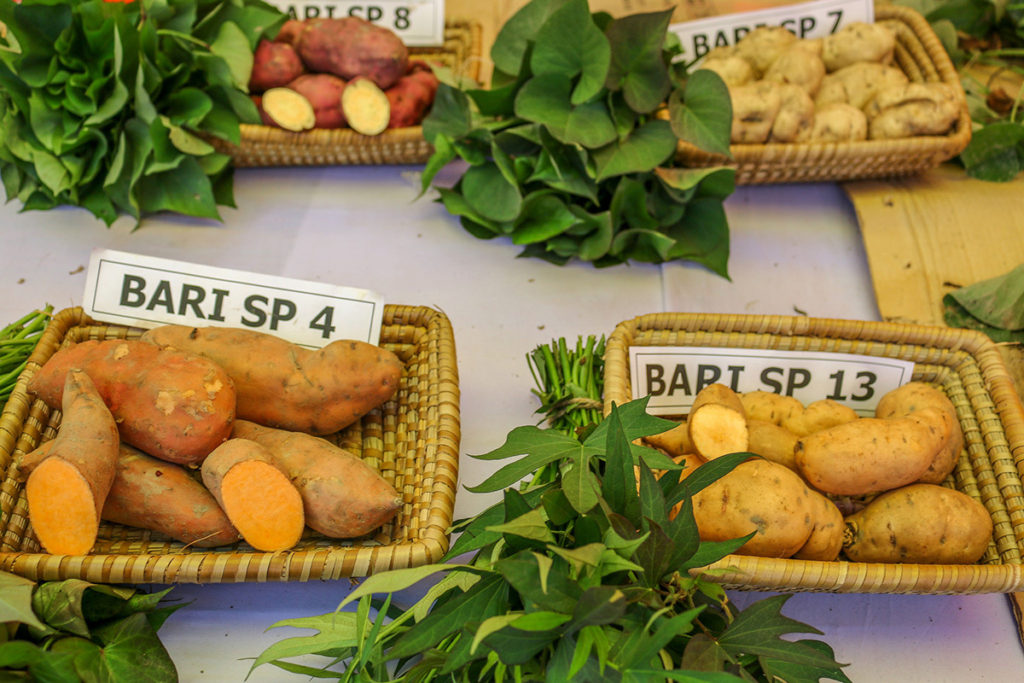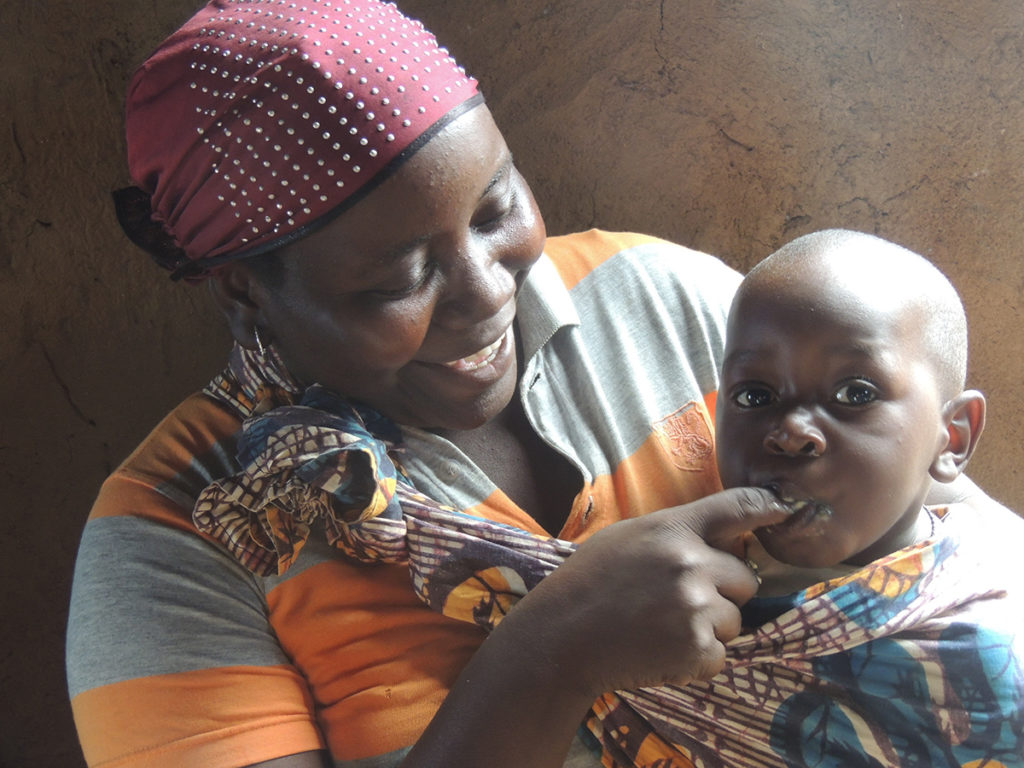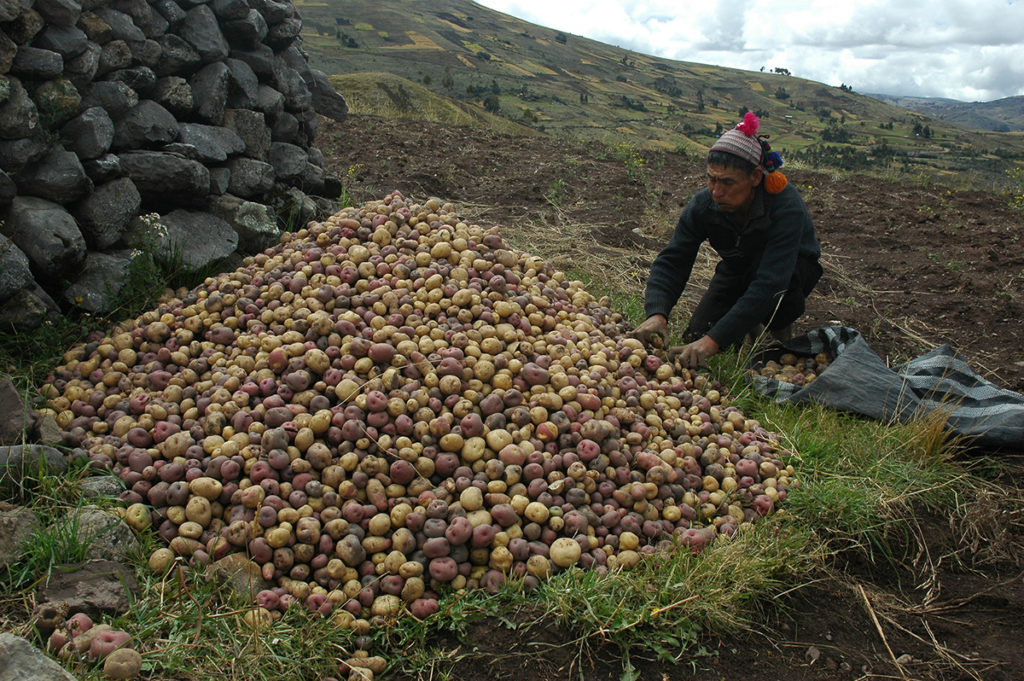This Thursday across the U.S., families will gather around the dinner table to give thanks. The annual feast is a time of reflection and counting blessings. Potato or sweetpotato will be on the table of every home in the U.S. on Thanksgiving. Did you know, that the International Potato Center is dedicated to helping smallholder farmers across the world build resilience and harvest their abundance through the power of these crops? As we work towards our goal of a more food secure world we take this time to give thanks for the innovations, tools, and people who are helping us achieve success.
- Accelerated breeding:
Rising temperatures, unpredictable weather patterns, and increases in pests and diseases make it hard to keep up with the pace of the rising challenges faced by smallholder farmers. Traditional breeding programs take an average of eight years to release new varieties adapted to local conditions, CIP works with National Agriculture Research Systems to cut this time in half with an accelerated breeding approach. Early testing of sweetpotato genotypes in multiple locations helps sweetpotato breeders identify viable candidates faster. In drought-prone Mozambique alone, 22 varieties have been developed, to help smallholder farmers tackle the challenges posed by climate change.


- Viable seed systems:
Access to clean planting materials and improved varieties can significantly increase farmer yields. Poor farmers often have to rely on deteriorated planting materials that are saved from one season to the next causing a significant decrease in farmer productivity as viruses begin to accumulate on their land. In Rwanda, some farmers saw their harvests grow by 200 to 300 percent when they replaced their sweetpotato vines with improved disease-free varieties. CIP works to build systems of decentralized sweetpotato vine multipliers and potato seed multipliers to help make quality planting material available to even the most remote communities.
- Value chain growth:
Farmers are growing new business opportunities with potato and sweetpotato. In Peru, native potato farmers have seen their crops get a facelift. Once seen as a poor man’s food, this humble tuber is now served in some of the world’s top-rated restaurants. In just 11 years, the value of native potato sales surged a staggering 159 percent and more than 20 product lines from chips to mashed potatoes were created. In Africa, sweetpotato puree is used as a viable substitute for wheat flour in baked goods. Farmers are also supplementing their health and income by selling the leaves and using sweetpotato silage as animal feed.
Feed the Future: Kenya Accelerated Value Chain Development Program


- Reduced malnutrition through biofortified orange-fleshed sweetpotato:
Hidden hunger robs future generations from reaching their full potential. Globally, more than 163 million children under 5 suffer from vitamin A deficiency, a form of malnutrition that can result in stunting, blindness, and early death. As little as 125 grams of biofortified orange-fleshed sweetpotato (OFSP) not only provides a healthy dose of vitamins B, C, and K, it meets the recommended daily allowance of vitamin A for a young child. While many countries work to counteract hidden hunger through supplementation programs, such work often doesn’t reach the most remote areas. A food-based solution to hidden hunger is cost-effective, sustainable, and accessible to families even in hard to reach areas.
- The Potato Guardians:
The Andes are home to more than 4,000 potato landraces. A group of farmers, known as the Potato Guardians, painstakingly dedicate themselves to preserving potato biodiversity. Each guardian cultivates a minimum of 50 varieties of potato landraces, while some safeguard as many as 500. Each season they harvest a rainbow of potatoes in hues ranging from bright yellow to deep purple. The genetic diversity of these potatoes may hold the genes needed to create new potato varieties that will help feed an increasingly hungry world.
The Guardians of the Potato: the future of potato biodiversity is in their hands


- Opening of CCCAP in China:
The CIP-China collaboration goes back to 1978. Since then, China has imported more than 8,000 root and tuber accessions used to develop over 100 new varieties with CIP parentage. In less than a quarter century, potato production increased by 25 percent. The opening of the new International Potato Center-China Center for Asia Pacific (CCCAP) in 2017 marks a new era of collaboration. Research breakthroughs and innovations will serve to build farmer resilience worldwide.
New CCCAP facilities in China mark new era for root and tuber research in Asia
- Our donors, partners, governments, and supporters:
Our work would not be possible without the generous funding of our donors, the expertise of our partner organizations, the buy-in of the governments where we work, and the support of people like you. Thank you all for helping us in our work to grow a hunger-free world.

